External mid-range solution: Creative Sound Blaster X4
First of all, the price: You can start at around 143 Euros, which is of course a huge monetary gap to the G3. So, we will now have to see whether the 110 euro surcharge is really worth it and where the exact added value is. If the X4, as the successor of the somewhat luckless X3, delivers what it promises, then the price might even come close. However, the X4 will also have to compete with the Soundblaster Z SE, which is quite a bit cheaper. On board this time is not the SB Command software, but the CreativeApp (for whatever reason) and lots of features that Creative proudly advertises.
The scope of delivery includes the X4, a USB 3.0 connection cable that connects the USB-C socket on the device with the USB-A of the PC (which would clarify both the data line and the power supply), and a special TOSLINK cable with a 3.5 mm jack connection. In addition, there are quick-start booklets for various features and the warranty. However, this is quite sufficient. The X4 is also well suited for connection to PC, console or even smartphone (PC, Mac, PS5, PS4, Xbox, Nintendo Switch, etc…, Smartphones with current Android and iOS).
The case’s upper side is dominated by the volume control including the status LED ring. There are three easy-to-reach buttons on the front edge. In addition to a label that explains the function of the individual keys, each of the keys also has an additional status LED. On the front, you’ll find two 3.5 mm jacks for a dedicated microphone connection and the headphone connection as a four-pin TRSS jack, to which you can either connect a pure headphone or the combined plug of a headset, if it doesn’t use a splitter or separate cables/connectors. Clever.
Four analog audio outputs on the back, to which you can connect a 2.x or 5.1 or even 7.1 speaker set analog. To the right of these ports, you’ll find a combined port that serves as either an analog line-in or optical-in (we remember the included optical cable). There is also an optical output and a USB Type C port for connecting the device to a PC. Four rubber feet on the bottom provide a secure stand.
Switching between optionally connected speakers and the connected headset or headphones can be done either via the CreativeApp software or even easier by pressing the SXFI button. Practical and good. All the software functions up to all the SXFI gimmicks can be intuitively learned by anyone. For gamers and streamers (or those who would like to become one), Creative has integrated an audio balance function that allows adjusting the chat and gaming volume to each other. Again, I’ll spare myself the very extensive marketing catalog and software screenshots at this point, which often change anyway. I’d rather take a look at the circuit board.
Now what do we find interesting inside? I wrote it already with the Sound Blaster G3 DAC that the installed Max97220 far under its technical possibilities with the output power and voltage, also to cannibalize nothing. On now to spoil the measurements: the part creates the maximum 3.3 volts at 600 ohms specified in the specs namely loose, one must only want to be allowed! This is not completely lossless, but more about that later. The 8416CN for the optical connections and the NORDIC nRF52810 for Bluetooth are also on board. All of them are good acquaintances from the G3 DAC.
And of course the SXFI Ultra DSP CUDSP600 is available again. While the Sound Blaster Z SE still used Cirrus Logic’s CS4398-CZZ as a 120 dB DAC, here it’s a less expensive CS 4382A-CQZ as a 114 dB, 24-bit, 192 kHz 8-channel D/A converter. In addition, we find a CS5345-CQZR from Cirrus Logic, which is an A/D converter chip with 105dB, 24-bit and 192kHz. There’s not much more and at the end of the day, the cheaper Sound Blaster Z SE even has the better power amp with real OpAmps. Actually, I’m a bit surprised that the audio branch of the more expensive X4 seems a bit stripped down.
The X4 is also recognized by Windows 11, but you still have to install the software if you want the full functionality including GUI and not just the rudimentary output. The CreativeApp software has become much more stable and the firmware updates for the X4 could also be installed without any problems. So Creative seems to have learned from old mistakes. Also good. Rather bad is that the X4 is not recognized in the SB Command software. However, it is worth installing the full package and checking for firmware updates in any case. Then it will work without errors.
Microphone usage
In all of my headsets, the microphone was slightly quieter (about 20 to 30%, depending on the model) compared to the other previous sound solutions, despite maximum gain. It can hardly be the bias, because otherwise the microphones would hiss and even distort in extreme cases. I raised the microphone boost of the recording device in question (X4, Microphone) in the Windows settings and the level was right again. Compared to the AE-5 or nuAudio from EVGA, everything was fine again, even without stronger noise. Peanuts, but it should definitely be mentioned. Please touch up Creative, thank you!
Maximum output level at 32 and 600 ohms
Do the advertised OpAmps bring us audible and measurable progress and how does it compare to the Sound Blaster Z SE? If you run the software without additional gain for “normal” headphones, you won’t get above 0.9 Vrms distortion-free at 32 ohms! To get real power, you have to choose the option for higher impedance headphones. Then, that works better, but when slight distortions are still measurable (but not audible). At 66.994 mW RMS, the X4 comes pretty close to the Sound Blaster Z SE’s 69.82 mW RMS per channel. That’s not bad at all for an external solution at 32 ohms. The 7.3 mW of the Godlike’s onboard sound, on the other hand, can easily be forgotten. Again, these are extreme improvements, as you can get pretty much all headphones to maximum level easily. With 1.4642 Vrms at 32 ohms, most acoustic emergencies are actually well manageable.
But what happens if you want to use 600-ohm headphones? With a real 2.3163 Vrms (Soundblaster Z SE 2.495 Vrms) you get an almost identical output power with almost 9 mW RMS. The 3.1 mW RMS and almost 1.37 Vrms of the onboard sound can be forgotten. The curve also looks much nicer and smoother again. It is thus also a clear and above all audible improvement for higher impedance headphones from 250 ohms. However, it should also be clear that it is still not a high-end solution. But it’s fine and even music isn’t an issue if you leave the sound processing off.
External voltage distance
Here, too, the measurement is of course the slave of the motherboard, graphics card and power supply during operation, despite the external USB connection. Let’s first look at the idle state on the desktop again with the maximum volume setting, which is still free of distortions, for the possible full level of just now. With 0.0009 volts, it is on the same level as the onboard solution despite the significantly higher overall gain and is also better in the end than the Sound Blaster Z SE. The 0.483 Vrms of the onboard chip are compared to 1.4642 Vrms. And so the distance to the interfering signal increases from 1:537 to 1:1627, which is very similar to the result of the Audigy FX V2 and is really excellent.
Now we start the game and load the savegame. In Ultra-HD and maximum settings, the graphics card really has to choke and over 500 watts flow through the thick pixel heater. I now measure 0.007 Vrms which also now results in a ratio of 1:209 to the maximum measured 1.4642 Vrms. The Sound Blaster Z SE managed 1:168 here and is thus worse. For the onboard sound, it was 0.0074 Vrms compared to 0.4831 Vrms, resulting in a ratio of only 1:65. Victory for the external X4 against the Z SE, although not extremely clear.
But what happens again in the in-game menu when the high FPS rates send the voltage converters into the stress test? This is also interesting, as it gives a ratio of 1:149 for the Sound Blaster X4, versus the 1:120 for the Sound Blaster Z SE, the 1:115 for the Sound Blaster Audigy FX V2, and the really poor 1:48 ratio of the onboard solution. The sparrows screech there, while the birdcage remains closed on the X4. External remains external and the pixel push is far away.
Interim summary
If you spend around 140 Euros and buy a Sound Blaster X4, you’ll spend 50 Euros more than the Sound Blaster Z SE, which is almost as good, but you’ll have a handy box with considerably more switching functions without software fiddling. Especially during the game, switching to the driver is rather pointless. The X4 weakens a bit below 80 ohms and the trace frays a bit, but that’s complaining on a pretty high level because you won’t actually notice it in practice. On the other hand, the curves of the higher impedance receivers are really good. What also does not work are fun headphones with 16 ohms, there the performance breaks away completely, because it distorts much faster.
The X4 beats the old X3 by a long way, but is currently excluded from the SB Command software, for whatever reason. This is a great pity and somehow a crack in the portfolio. Otherwise, I would have the usual specs, but you already know that:
- 1 - Introduction and Overview
- 2 - Humming and other unwanted "sound"
- 3 - Noise and jitter on the external USB DAC
- 4 - Graphics cards and intermodulation
- 5 - Onboard: Realtek ALC1220 vs. Realtek ALC1200
- 6 - Onboard: Realtek ALC4080 and ALC4082
- 7 - Datasheets: Realtek ALC1200, ALC 1220 and ALC 4080/ALC4082
- 8 - RMS voltage, output power and sound level
- 9 - Intern: Creative Sound Blaster Audigy FX V2 (Entry Level)
- 10 - Intern: Creative Sound Blaster Z SE (Mid-Class)
- 11 - Extern: Creative Sound Blaster G3 (Entry Level)
- 12 - Extern: Creative Sound Blaster X4 (Mid-Class)
- 13 - Summary and Conclusion















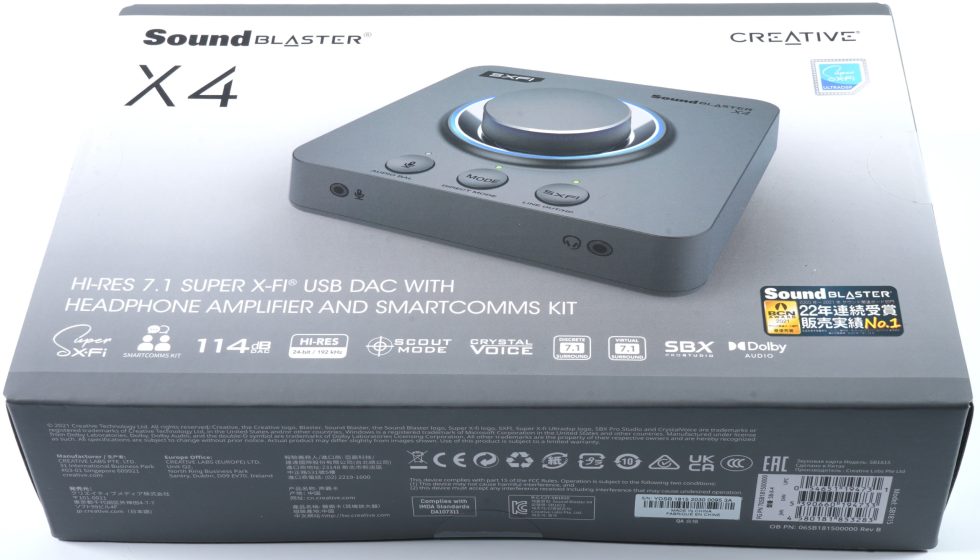
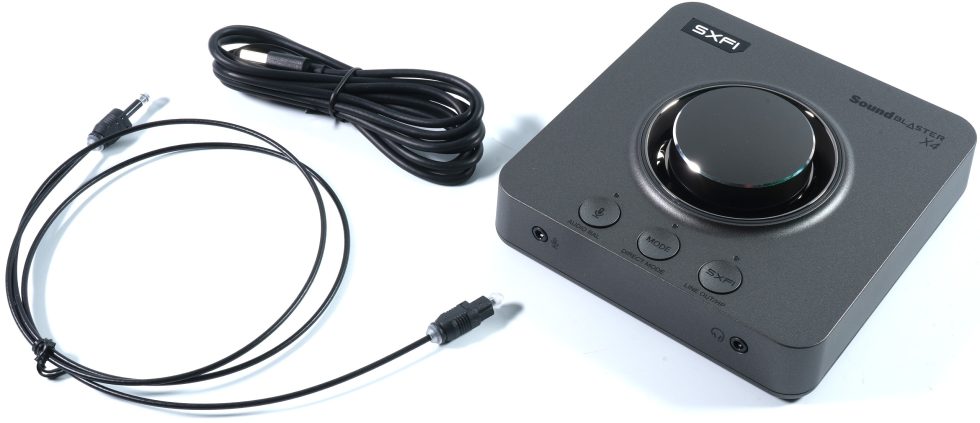
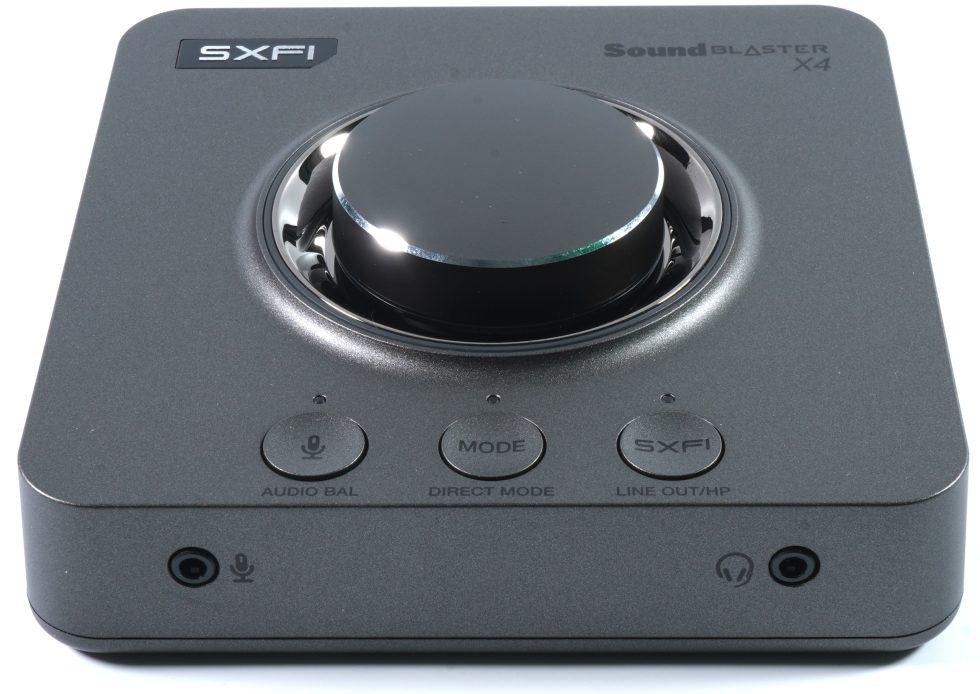
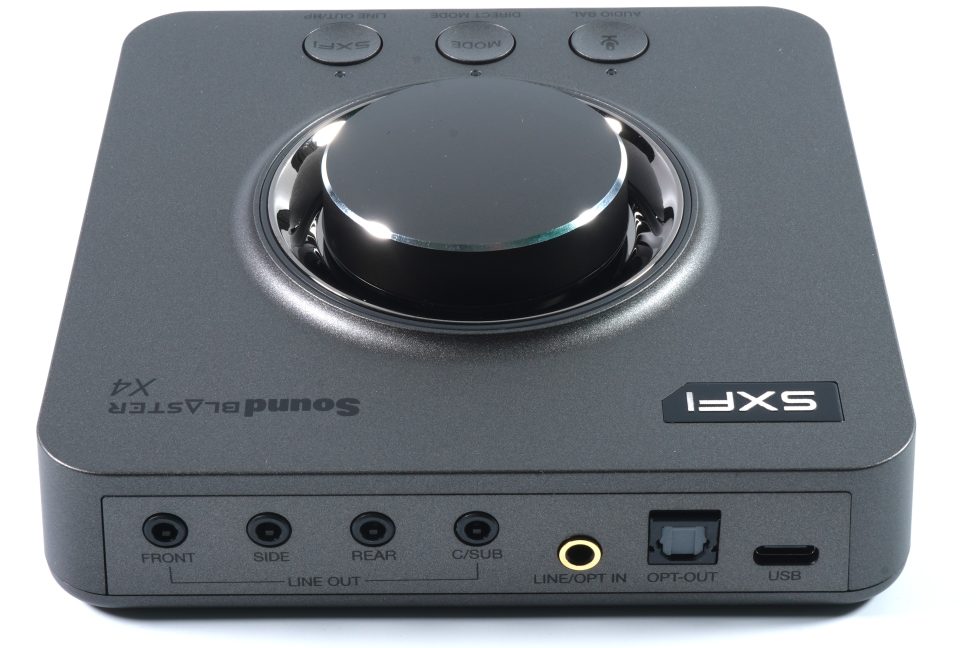
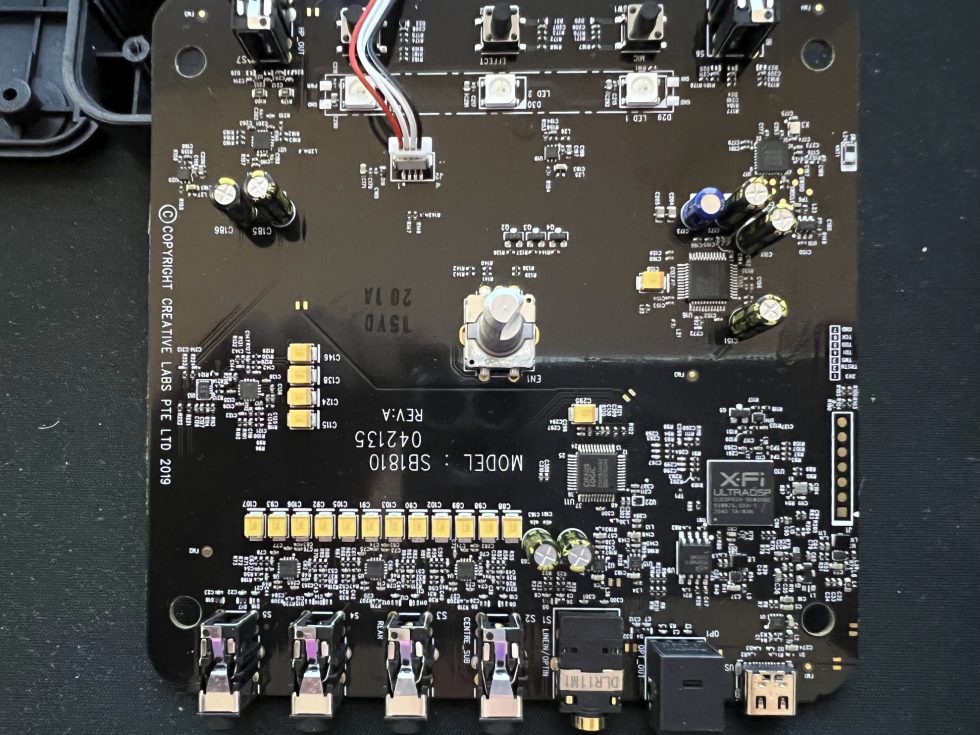
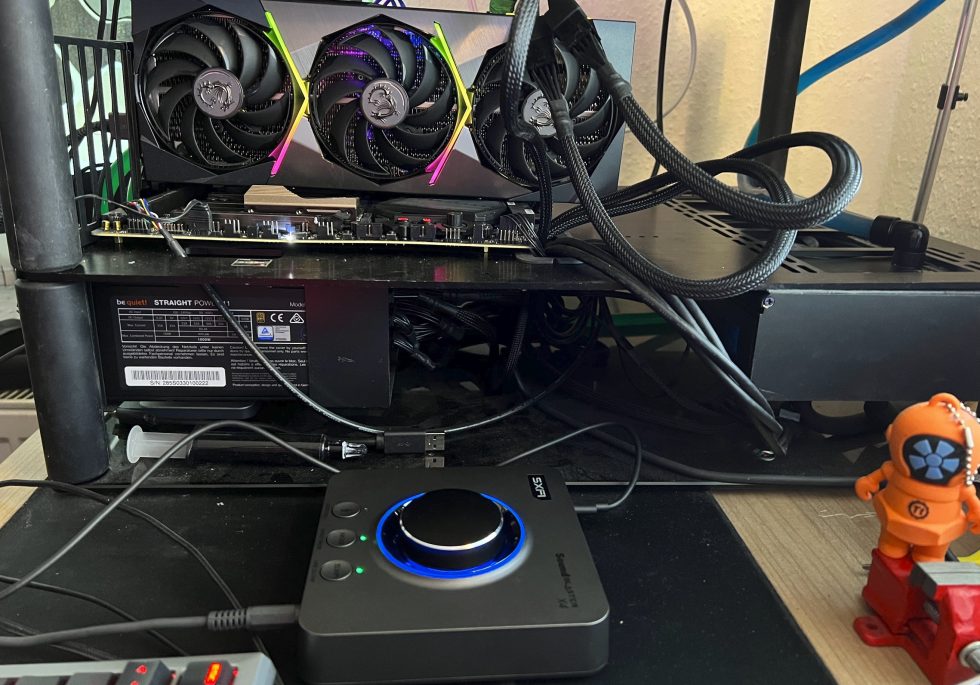
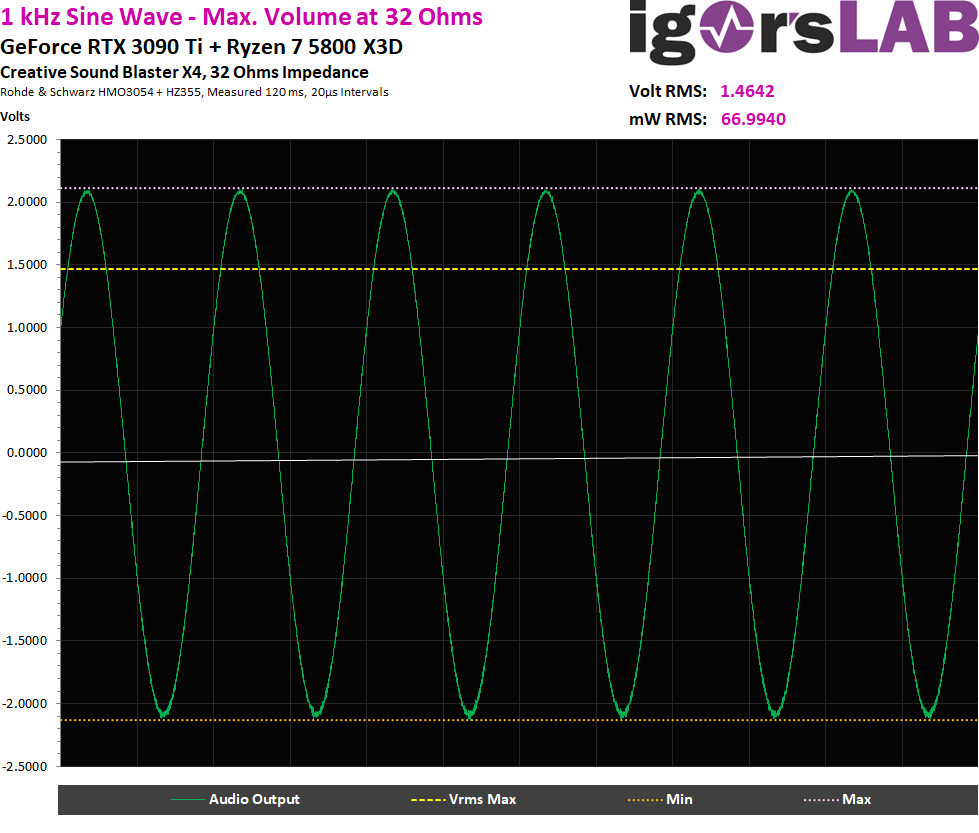
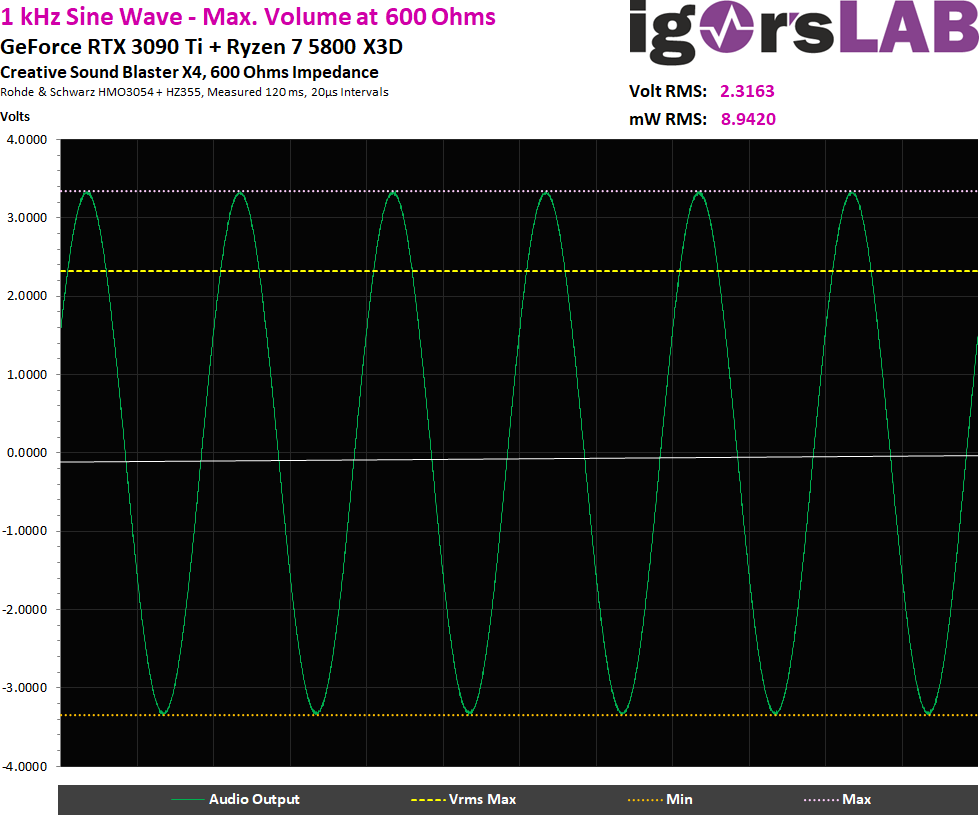
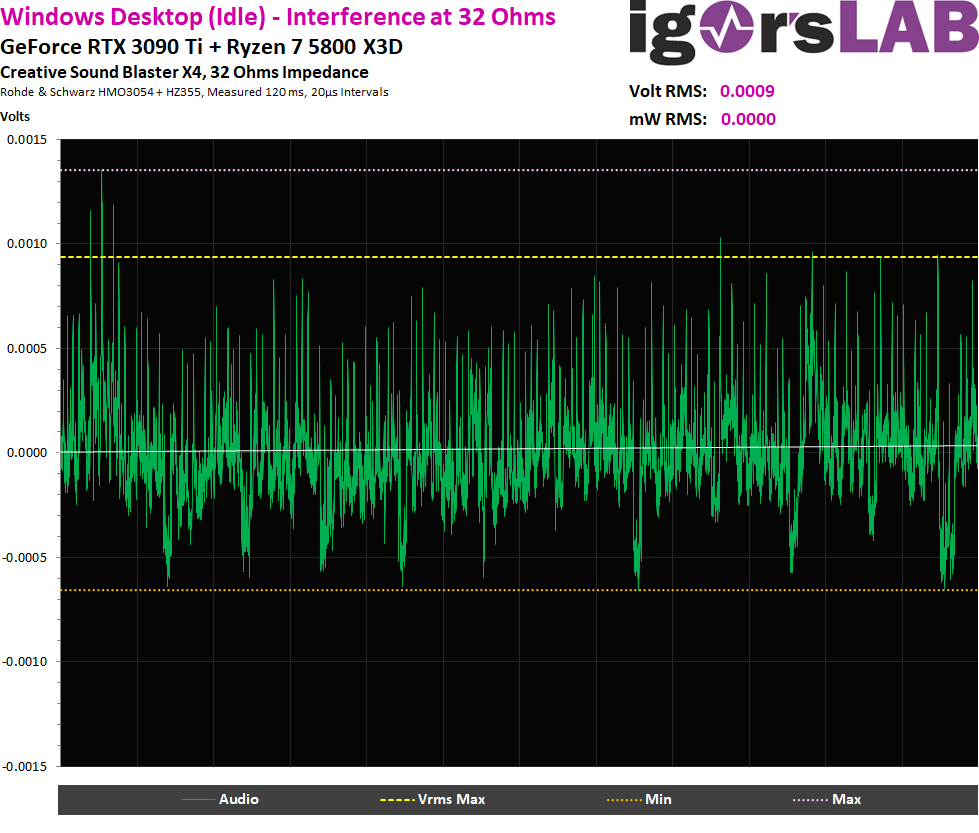
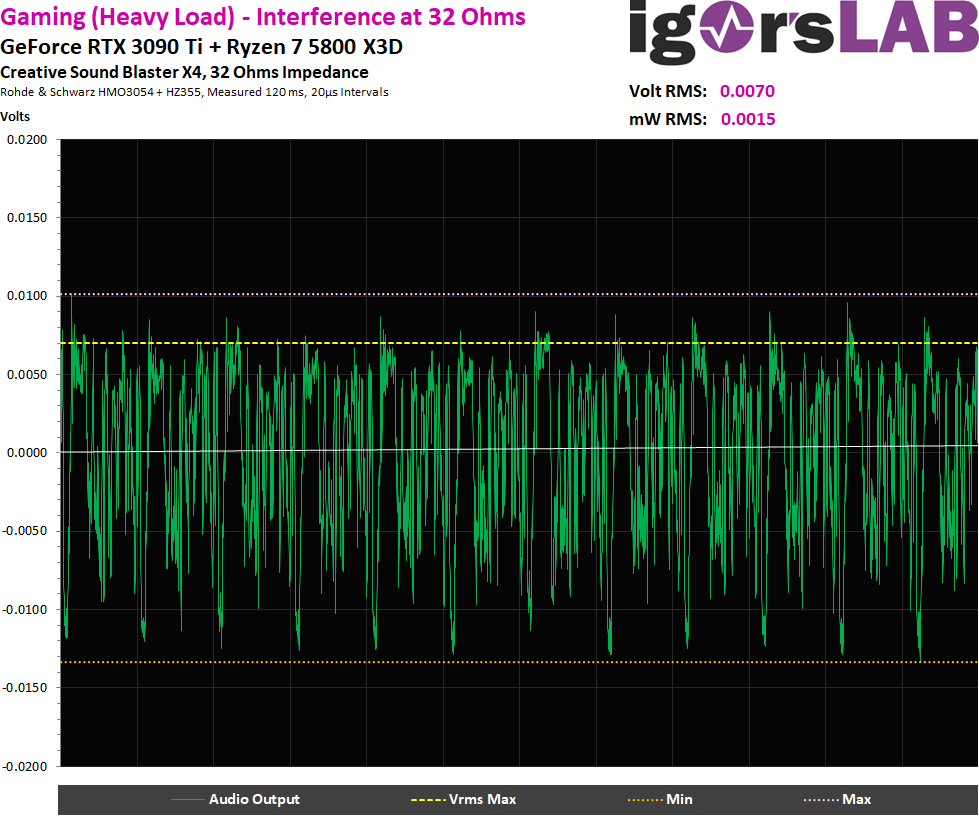
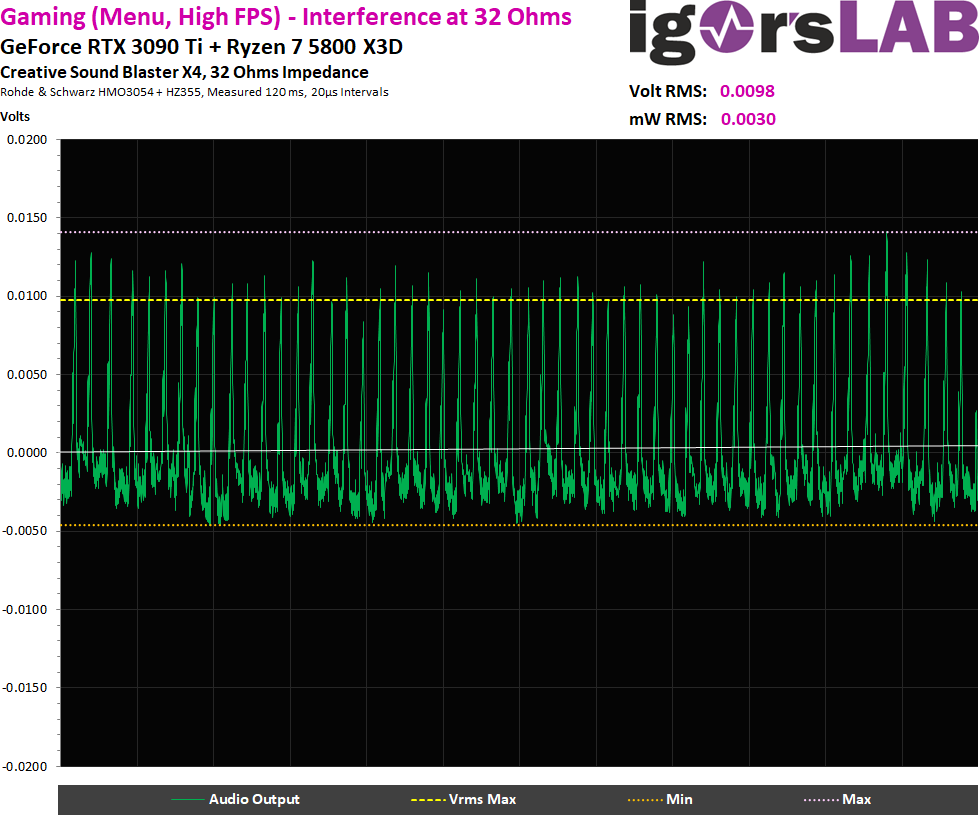
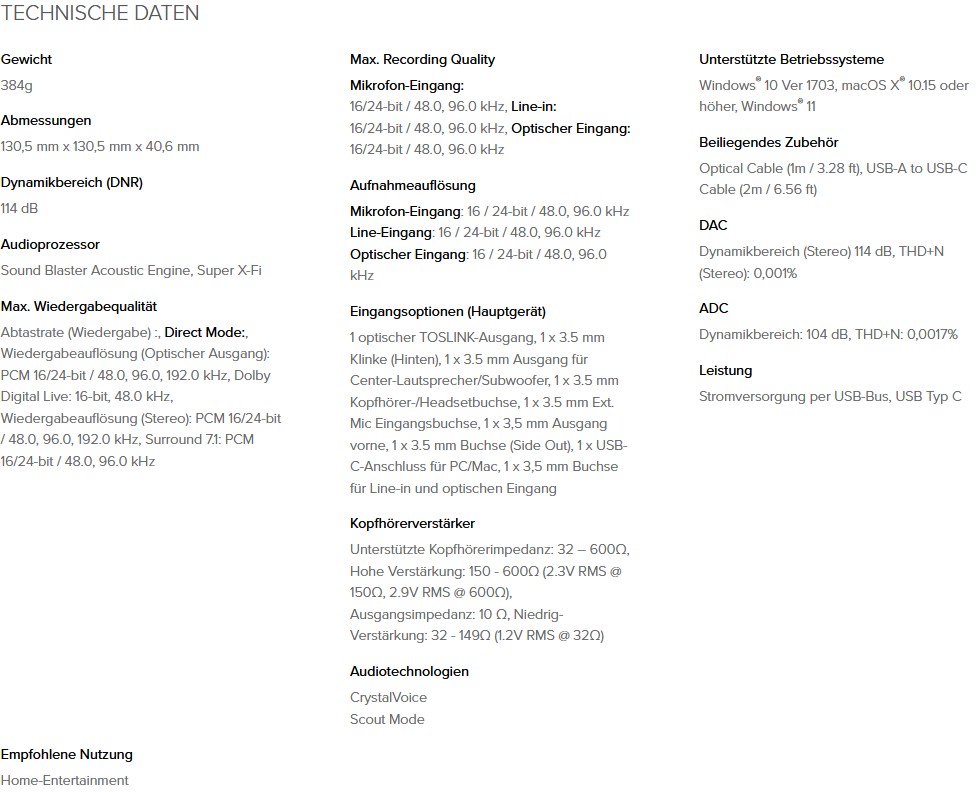




















199 Antworten
Kommentar
Lade neue Kommentare
Mitglied
1
Urgestein
Veteran
1
Veteran
1
Urgestein
1
Veteran
1
Urgestein
1
Urgestein
Urgestein
Urgestein
Urgestein
Urgestein
1
Alle Kommentare lesen unter igor´sLAB Community →